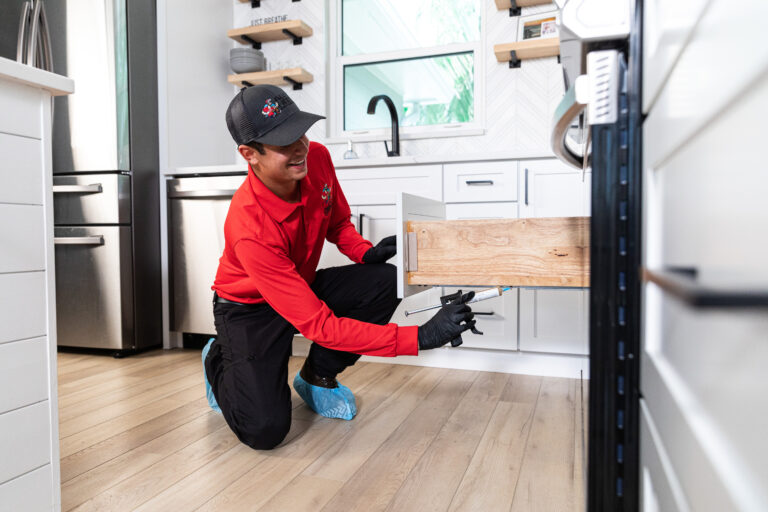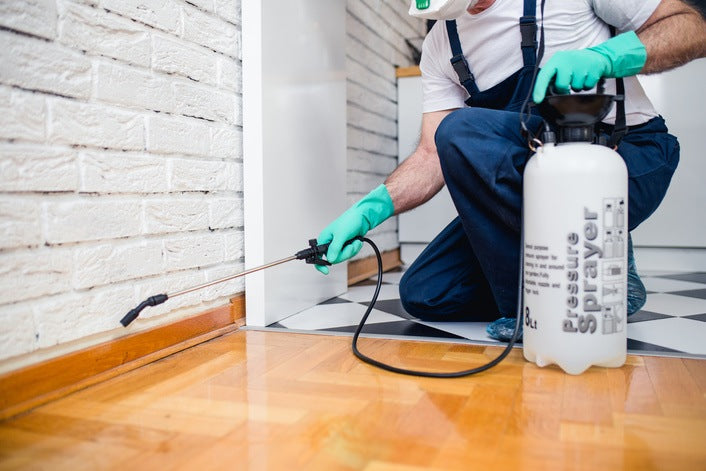Pest Control Homestead: The Reliable Way to Keep Your Home Pest-Free
Pest Control 101: Identifying Common Pests and Their Reliable Therapies
Bug control is a fundamental facet of maintaining a healthy and balanced living setting. Common parasites like ants, rodents, and different pests can posture considerable obstacles. Comprehending their habits and signs of problem is important for effective monitoring. While chemical remedies exist, there are additionally natural alternatives worth taking into consideration. As one discovers the nuances of parasite identification and treatment choices, the relevance of avoidance approaches ends up being progressively noticeable. What methods can absolutely maintain parasites at bay?
Identifying Ants: Kinds and Their Environments
Ants, tiny yet awesome insects, are a diverse team that can be located in various environments throughout the world. There more than 12,000 determined species, each showing distinct behaviors and adjustments. Usual types consist of the black garden ant, which thrives in warm locations, and the fire ant, recognized for its painful sting, common in warmer areas. Woodworker ants like damp wood, making them a worry for house owners, while scent-laden home ants are brought in to human food resources.
Ants build elaborate nests, often below ground, in timber, or within structures. Their environments range from forests to urban setups, showcasing their versatility. Most types are social, living in colonies that can differ in size from a few lots to millions. Determining the type of ant is necessary for reliable bug administration, as each species has various nesting practices and foraging actions that influence control methods. Recognizing their environments help in avoidance and therapy initiatives.
Recognizing Rats: Signs of Infestation
Rats, like ants, can pose substantial obstacles for companies and house owners alike. Recognizing indicators of an infestation is necessary for effective pest control. Typical indications consist of droppings, which are commonly found near food sources or nesting areas; small, dark pellets that can be mistaken for seeds. Eaten wires, furnishings, or product packaging might likewise indicate a rodent existence, as they continuously chomp to keep their teeth manageable. Additionally, property owners might observe gnaw marks on walls or walls. Unpleasant smells, coming from pee and droppings, can show a bigger issue. Scraping or scampering noises, specifically in the evening, are an additional indicator of rodents. Ultimately, the presence of nests, typically made up of shredded materials like paper or fabric, can validate a problem. Addressing these indications quickly can help alleviate damages and protect against the spread of diseases connected with rats.
Common Insect Pests: From Aphids to Termites
Insects stand for a varied group of pests that can create chaos in yards and homes, with types varying from tiny aphids to harmful termites. Aphids are small, sap-sucking bugs that can swiftly infest plants, bring about stunted development and distortion. They often attract ants, which protect them from all-natural predators. On the various other end of the range, termites are well-known for creating considerable architectural damage to wood frameworks. They take in cellulose found in timber, compromising the honesty of buildings and homes. Various other usual pest pests consist of cockroaches, which prosper in unhygienic conditions, and bedbugs, understood for their bites and trouble in removal. Flies, especially houseflies, can pollute food and transfer diseases, while insects present wellness threats via their attacks. Reliable parasite management begins with recognizing these pests and recognizing their behaviors, which is vital for stopping problems and safeguarding both residential or commercial property and health and wellness.
Efficient Therapies: Chemical and Natural Solutions
While house owners Our site frequently look for prompt alleviation from bug invasions, picking the best therapy-- whether chemical or all-natural-- requires cautious consideration of efficiency and safety and security. Chemical services, such as pesticides and pesticides, can offer rapid results however often lug dangers, including prospective injury to non-target varieties and ecological worries. House owners have to check out tags, adhere to application standards, and consider the timing of therapies to decrease dangers.
On the other hand, natural options, such as diatomaceous planet, crucial oils, or homemade traps, charm to those seeking eco-friendly choices. Although they might take longer to show outcomes, several natural therapies are more secure for houses with youngsters and family pets - Pest Control Homestead. Integrated insect monitoring, which combines both chemical and natural methods, can also work. Ultimately, the selection between these therapy kinds must align with the severity of the invasion, personal values pertaining to safety and security, and the particular bug being targeted
Prevention Strategies: Maintaining Your Home Pest-Free

Furthermore, correct landscape design can deter parasites; keeping bushes cut and eliminating particles from the backyard reduces concealing locations. Home owners ought to likewise take into consideration dampness control, as many parasites grow in damp problems. Repairing leaks and ensuring proper drainage can alleviate this risk. Lastly, utilizing all-natural deterrents, such as necessary oils or diatomaceous planet, can develop a negative setting for bugs. By implementing these techniques, people can develop a pest-free home and reduce the likelihood of future problems.
Often Asked Concerns
How Do I Know if I Have a Pest Issue?
Signs of a pest trouble include droppings, munch marks, nests, or unusual sounds. Observing harmed food or residential property, along with unexplained bites or rashes, might additionally show the existence of pests in the atmosphere.
Exist Any Type Of Seasonal Parasite Trends to Be Conscious Of?

Can Indoor Plants Attract Parasites?
Interior plants can without a doubt bring you could look here in insects, as they supply an ideal atmosphere for insects like aphids and crawler mites. Pest Control Homestead. Appropriate treatment and routine assessment are vital to preserve and prevent infestations plant wellness
What Are the Health Dangers Associated With Pest Infestations?
Bug problems present various health and wellness dangers, consisting of allergic reactions, respiratory problems, and the spread of illness. Exposure to insects like pests and rodents can result in infections, bites, and contamination of food and living atmospheres.
Just how Often Should I Evaluate My Home for Bugs?
Regular inspections must take place a minimum of once every period, ensuring any indications of bug task are discovered early. House owners may change frequency based on their specific environment and previous pest issues. Consistency is key.
Typical insects like ants, rats, and numerous insects can present substantial obstacles. Recognizing the kind of ant is necessary for effective pest management, as each types has different nesting habits and foraging behaviors that affect control approaches. While home owners commonly seek prompt relief from bug problems, selecting the right treatment-- whether chemical or natural-- needs cautious consideration of effectiveness and safety. Reliable bug control extends beyond prompt treatments; it also involves aggressive procedures to avoid infestations before they begin. Seasonal bug trends often consist of raised rodent task in autumn as they look for warmth, while springtime usually brings an increase of termites and ants.